Search
Search Results
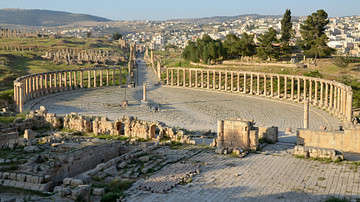
Definition
Jerash
Jerash (aka Gerasa, Gerash or Gerasha) is the capital and the largest city of the Jerash Governorate in Jordan, but in ancient times it was one of the wealthiest and most cosmopolitan cities in the ancient Near East. Settled by humans as...
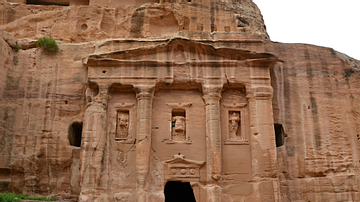
Image
Nabataean Rock-cut Tomb in Petra
The Tomb of the Soldier in Petra (Jordan), carved out of the red sand stone with niches containing male figures dressed in military style. The tomb was built in the Nabataean period around the second half of the 1st century CE but was remodeled...
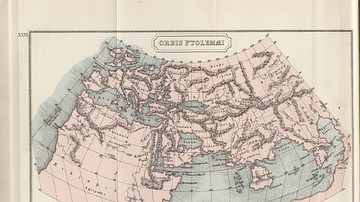
Definition
Arabia
The ancient Arabians, or Arabes as they were called by the Hellenes, were a Semitic people. One must note that the Arabians were not a single people but multiple smaller kingdoms and tribes. Arabia was home to great city builders and nomads...
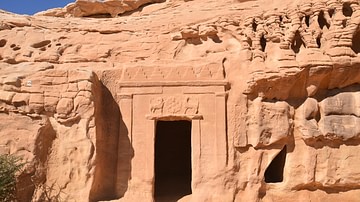
Image
The Lion Tomb, Hegra
The Lion Tomb is located in the Qasr al-Bint Nabataean Necropolis of Hegra (now in Saudi Arabia). The façade of the tomb is decorated with a carving of two felines on either side of a rosette. The name of the stonemason who carved the tomb...
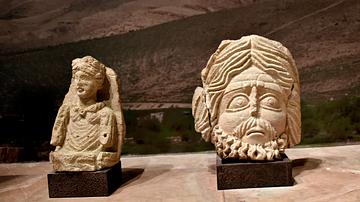
Image
Atarghatis and Hadad from Khirbet et-Tannur
Atarghatis is seated on a throne and a large head of the bearded Hadad, sculpted in limestone in the Oriental Syrian style, is beside her. Both came from a group of sculptures that decorated and adorned the Nabataean temple at Khirbet et-Tannur...

Image
Nabataean Eagle
The eagle is a popular icon in many cultures. In Jordan, eagles are associated with the Nabataean god Dushara, but were also meaningful to the Greeks, Romans, and Egyptians, who lived, travelled and lived here. Circa 100 CE. From modern-day...
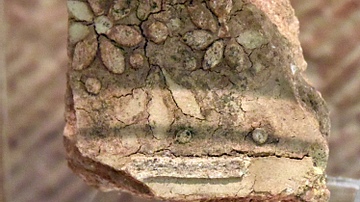
Image
Nabataean Stucco Wall Decoration
This is part of a stucco wall decoration from Qasr al-Bint Temple at Raqmu-Petra. Nabataean, 1st century CE. (The Jordan Museum, Amman, Jordan).
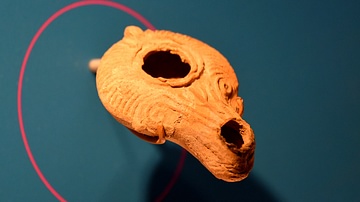
Image
Nabataean Lamp from Wadi Musa
This is a pottery lamp. Nabataean Period, 100 BCE to 500 CE. From modern-day Wadi Musa, Jordan Hashemite Kingdom. (The Jordan Museum, Amman, Jordan).
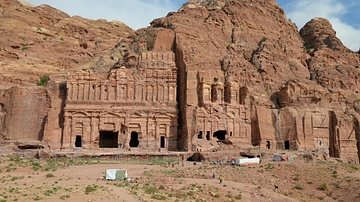
Image
Nabataean Tombs of Petra
View of the Royal Tombs at Petra (Jordan). From left to right: the Palace Tomb with three distinct stories; the Corinthian Tomb and the Silk Tomb. 1st century CE.
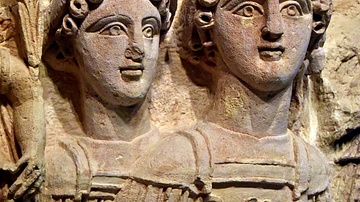
Image
Gemini from the Adh-Dharish Temple Facade
This sculpture of Gemini was part of the temple's facade. The temple was designed according to classical fashion. It contains major constitutional elements of the classical architectural order, but its decoration was not classical at all...